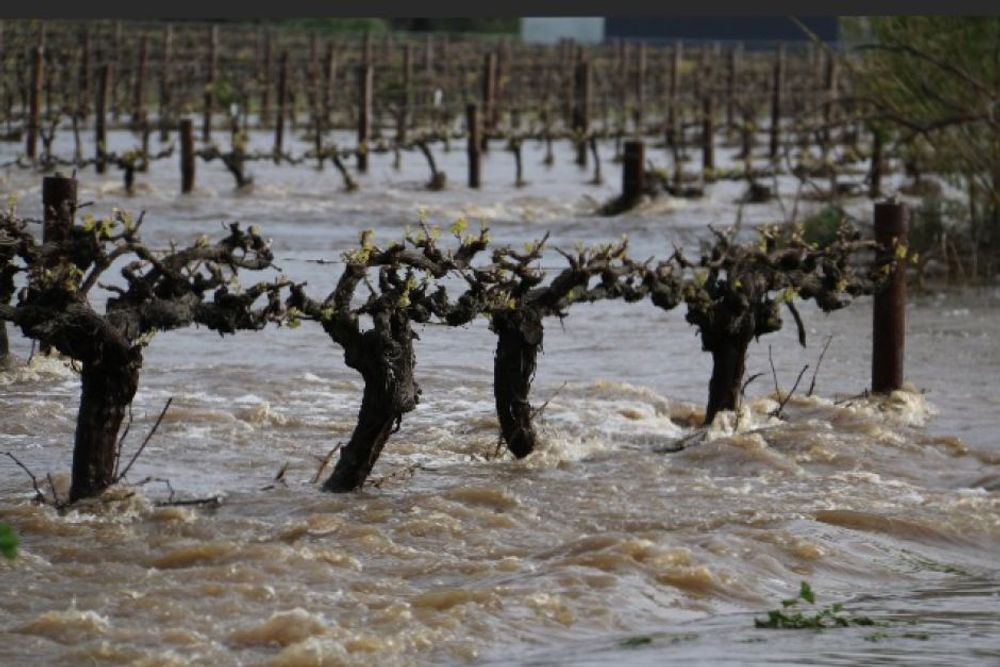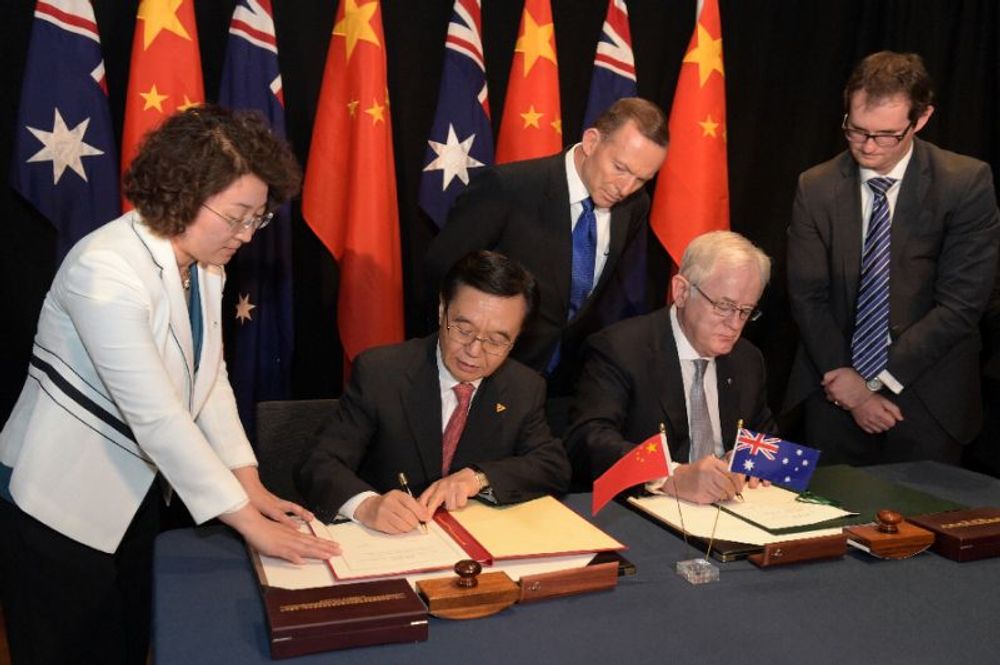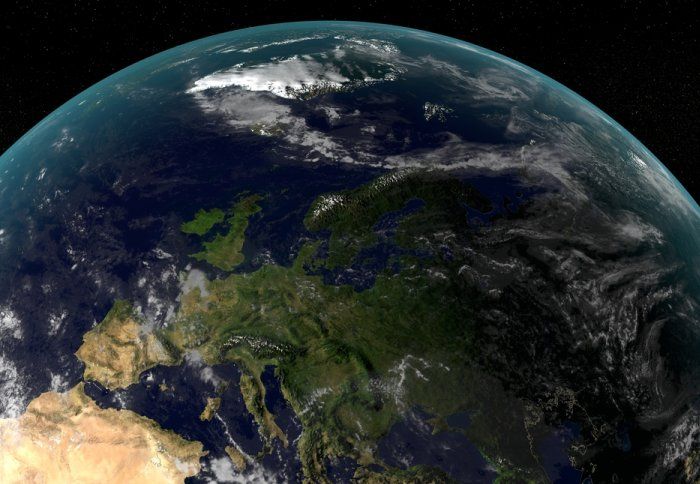There are further signs from IWSR’s latest global trends research that wine drinkers around the world are choosing to drink less, but better.
The full ramifications of what impact the global slump in wine production during 2017 actually had on the world wine economy are now being seen in reports issued by respected authorities such as IWSR.
It has just released the key findings from what it calls “the tumultuous” conditions on which its global wine report for 2017/2018 is based and the knock-on effect they are now having on the global market in 2019.
What makes this report so interesting is that it analyses both the volume figures from our main wine producing countries, but then also looks at the styles and types of wine that those countries are increasingly making. Changes that reflect the changing tastes and demands of global buyers and wine consumers now and in the future.

The world over flash floods caused damage to vineyards
First let’s remind ourselves just how bad that 2017 vintage was for so many countries. France, for example, arguably still the most influential wine market of them all, reported an “historic low” with production down to World War Two levels. Bordeaux production was down 40% on 2016 which hit its performance around the world in 2018. The IWSR says Bordeaux’s global performance was down 10% in 2018, largely down to the slump in exports to China.
Spain too endured a tough harvest with 2017, recorded as being the worst grape harvest since 1962, down some 15%. Inevitably, this had a knock on effect on the world’s third biggest global wine region: Rioja. The poor harvest not only limited availability, it pushed up prices which no doubt contributed to a global sales drop last year of 7%.
Italy was also down by over a fifth with price increases into the market for its major cash drivers like Prosecco and Pinot Grigio.
That said some Italian regions did better than others in 2018 after the poor 2017 harvest. It was a bumper year for wines from the Veneto region in the North Eastern region of Italy: IWSR numbers show a jump in sales volume of almost 8% in 2018, with demand for Venetian wine remaining strong in Germany and the UK.
The US remains the overall most valuable wine market, worth $34.8bn in 2017, with France second at $16.7bn, followed closely by China with $16.5bn. The IWSR predicts China will overtake France by 2020 as the second most valuable market in the world worth more than $19.5bn.
The IWSR’s ranking of the top five volume markets remained unchanged in 2017. The US was in the lead at 318m cases, followed by Italy (266m) France (250m), Germany (224m) and China (156m).
Falling consumption – even in China

The huge growth in wine drinking in China has slowed in the last year
Of the top 10 still wine producers, IWSR figures show only the US recorded a rise in wine consumption last year. Even then it was only by 0.4%, and driven almost exclusively by domestic sales, with exports falling by nearly 2%. Otherwise there were declines in China, Italy, France, Germany and Spain whilst the US was flat.
Rabobank in its most global wine report says China reported its first decline in imported wine volume since 2014. It said: “Overly optimistic expectations and aggressive investments in the wine market have resulted in oversupply and overstocked products, and the market is working to draw down existing inventories. This – in addition to several other factors, including a slowdown in economic growth, notable price increases of French wines, fading consumer confidence, the weakening of the renminbi, and uncertainty in US-China trade – have led to an overall decline in imported wine.”
That said the unprecedented growth in China in the last 10 years for imported wine means it is still the right market to be in for the long term. “China is expected to remain an attractive export market moving forward,” said Rabobank. It’s just the market is evolving and domestic producers are becoming better tuned in making the right wine for the ever more knowledgeable Chinese consumer.
As the fastest growing wine market in the world, there are various factors contributing towards Chinese ten years of growth, and its current temporary period of stagnation. According to Rabobank one of these is that Chinese consumers have a marked preference for imported wines, considering them to be of a better quality than domestic wines. This has resulted in imports growing fourfold in the past decade.

The Free Trade Agreement between China and Australia has been a massive boost to both countries and their wine industries
The biggest losers in the Chinese market have been France and the US, claims Rabobank, pointing to French wine imports dropping by nearly a quarter (23%) in volume and 4% in value last year. However, French wines enjoyed an overall price increase last year due to a poor harvest in 2017.
Meanwhile, the US China trade war that has been simmering since President Trump came to power is hitting the wine sector hard. US wine is now subject to a total levy of 106%, including tariffs, a value added tax and an excise tax, after China has repeated ramped up the taxes on imported US wine.
Between 2017 and 2018 US wine imports to China plummeted by 25% in value and in the first four months of this year have plummeted a further 58.7%. Exports to China represent less than 1% of US production, but the long term concerns should not be underestimated,” said the Rabobank report.
Meanwhile, the biggest winners in the Chinese market have been Australia, which is benefiting from a free trade agreementtwith China, and New Zealand, Chile and Georgia who all enjoy bilateral trade deals with the Asian nation.
Changing tastes
IWSR’s reports shows that whilst consumers around the world continued to show a preference for red wine, accounting for 54% of total wine consumption, volumes dropped globally by nearly 4% as demand from the French and Chinese red markets recorded big falls. 2018 was the third year in a row where red wine volumes were down, says the IWSR.
White wine saw its first drop in global volumes, by 0.5%, since 2014, on the back of poor harvests in France, Germany, Italy, Spain and South Africa. But whilst volumes may have fallen, the overall global share of white wine increased to over a third (36%) of the total market.

The founders of White Girl rosé have captured rosés zeitgeist moment
2018 was the year that rosé really broke through as a wine style you can drink all year round in key markets, particularly the US, says the IWSR. In fact buoyant sales in the US helped rosé increase its global sales by 1.9%, and account for 9% of the world market.
Demand for organic wine is also on the increase, with its global share now up to 2.4% of all wine sold. The equivalent of 690m bottles of wine. 2018 was another good year for organics, although its 2% increase was slower than in recent years.
The reasons for the growth in organic wine are many, but they are clearly benefiting from a more environmentally aware consumer. And from key buyers across Scandinavia where the major monopolies have made organic wine such a key part of their ranges.
In Sweden, for example, organic wine now accounts for a fifth of the market, and is growing by 22% year on year. It’s a similar story in Norway where organic wines make up over 10% of wine consumed and in Finland and Denmark its slightly less at 5%.
The IWSR sees organic still wine growth outstripping that for traditional still wine in the coming years – up 9.2% in compound annual growth between 2017 and 2022, or 87.5m cases. Europe will be the main driver for organics, accounting for 78% of the global organic wine market by 2022 and the Americas 12% of total organic wine consumption.
Less but better

But whilst consumption levels are down in so many major key markets, there are clear signs that people are drinking better, which, in turn, is pushing up wine values around the world. Globally, the IWSR’s predicts the retail value of wine will climb to $224.5bn by 2023, up from $215.8bn in 2018. Driven considerably by the continued growth in sparkling wine and Prosecco which is expected to show a five-year CAGR growth of 1.17% between 2018-2023.
Export-wise, South Africa fared well, helped by favourable currency rates which resulted in unexpected growth in China, with a strong rise of nearly a fifth.
Cabernet Sauvignon maintains its standing as the most widely planted grape variety in the world, but it did lose some market share in 2018 with slower sales in China, which alone accounts for 40% of the variety’s sales.
Chardonnay’s popularity is also underpinned by how versatile it is to grow and IWSR figures show that until last year it had been on the rise again. The US now accounts for two thirds of all global Chardonnay sales and it continues to be its key market.
Sauvignon Blanc is the third most popular grape variety, says the IWSR, and it made some strong gains in 2018. Helped by the fact Sauvignon Blanc is still not big in China, so was hit less by the overall drop in Chinese wine consumption last year.
Of the less mainstream varieties, Chenin Blanc grew significantly last year with surprising double-digit gains. This can in part be accredited to the scale of losses seen in 2017, but is mainly due to strong export growth from South Africa to the UK and Germany.
Once again the IWSR report shows how volatile the global wine market is and whilst some trends are fixed – particularly the rise of the US – there is so much in flux – like in China – that changes the global market so dramatically from year to year.
- This article has been adapted to the one first published on VINEX the bulk and bottle wine trading site.









































